2016 Honda Pilot Review

The Honda Pilot has been transformed.
From a utilitarian box on wheels to a sleek near-luxury SUV the style shift is almost shocking in its departure from the past.
Pairing that dramatic redesign with a long list of upgrades, does this latest model have what it takes to put the Pilot at the helm of the 3-row crossover segment?
Bu-Bye Box
While we should keep you waiting with a line like “you’ll never guess what happens next,” the short answer is: yes.
Over the past few years utility vehicles like the boxy Ford Escape and the square Nissan Pathfinder have traded in their chiseled looks for a more curvy appearance. Now the Pilot is following that trend, and for good reason. Or should we say reasons.
First and foremost is the truck’s perception.
Get the Flash Player to see this player.
FAST FACTS
| Engine: | 3.5L V6 with 280 hp and 262 lb-ft or torque. |
| Transmission: | 6-speed automatic or 9-speed automatic |
| Fuel economy: | Varies from 20/27/23 city/highway/combined (9AT FWD) to 18/26/21 (6AT AWD) |
| Price: | From $30,875 to $47,300 |
Honda’s market research surrounding the previous generation Pilot indicates that the two main rejection reasons for that model were styling and fuel economy. According to their research, people saw the boxy shape and assumed that it was bad on gas. This was true even when the Pilot had best-in-class fuel economy and continued to haunt it as the truck grew older and gave up that title to more modern rivals.
Of course, if you’re in the opposing camp and you did like the look of the old Pilot you can always blame Obama.
How is this Obama’s fault? Well, it’s called government mandated corporate average fuel economy standards and for Honda to hit its targets, it needs sleek aerodynamic shapes in order to eek our every last mile per gallon. Thankfully, you, the consumer, get to reap the reward.
Gone is the big boxy grille. It also looks longer and lower, because it actually is. The Pilot shaves an inch off the top and adds three inches in length overall, with roughly two inches between the wheels and an inch of extra rear overhang.
But Honda has done so much more to make the new Pilot a fuel economy leader.
Lighter, Faster, More Efficient
For starters they shaved almost 300 lbs from the curb weight. They’ve also added a new V6 that makes 30 HP more than the previous one but gets better fuel economy thanks to direct injection, cylinder deactivation and a start-stop system on higher grades.
There’s a new six-speed transmission replacing the old five-speed unit because, well . . . it’s not 2001. Plus, high-spec models (Touring and Elite) get a new nine-speed unit that’s actually 66 lbs lighter than the six and offers shift times that are 25 percent faster.
Regardless of which trim, the Pilot is right at the front of the pack for fuel economy and will average from 21 to 23 mpg. On the meandering country roads of Kentucky we managed as high as 26 MPG.
On The Road and Off It
Driving the Pilot, you now sit an inch lower while ground clearance is 7.3 inches, which is lower than the Toyota Highlander, but taller than the Pathfinder.
The old Pilot scored poorly when it came to noise, vibration and harshness (NVH) so with the new model significant efforts, including added insulation and thicker glass, have been made to improve sound deadening. And it shows.
It also feels noticeably quicker and Honda claims a 0-60 time of around 7 seconds. Faster, it’s more nimble too, due partly to the weight reduction, but there’s also a lot going on underneath you.
Most importantly, there is an all-new all-wheel drive system that is essentially a hand-me-down version of Acura’s Super Handling AWD setup. Called i-VTM4 it, sends 100 percent of the power to the front wheels but can send up to 70 percent to the rear when needed and all of that can be delivered to just one rear tire to push you through a corner.
To help make the most of i-VTM4, Honda borrowed a page from the leaders in the off-road segment and added what it calls an Intelligent Traction Management button on the center console. This lets the driver chose different pre-set models for the terrain. Front-wheel drive models get a choice of Normal or Snow, while all-wheel drive versions let you select from Normal, Mud, Sand and Snow modes.
Unfortunately the smooth, swerving roads of our test drive route are no place to experience the benefits of any of these settings. They are, however, ideal for feeling-out the nine-speed auto and start-stop system.
The latter does mean the Pilot takes about a half-second longer to leave the line, which is a small annoyance.
It may also be to blame for a sudden hiccup in the Pilot’s otherwise smooth demeanor, with the truck lurching away from a stop. Perhaps an exceptionally speedy pause at a stop sign is to blame, with the stop-start system killing the engine just as we reapplied the throttle.
Room for the Family, and Then Some
Getting back to the truck’s size, the increases put it near the front of the pack when it comes to cargo room – a category Honda almost always dominates in. Try as it might, there’s just no competing with the acres of real-estate inside the GM trio (Chevy Traverse, GMC Acadia and Buick Enclave).
As for passenger space, 2nd row legroom is ideal though 3rd row space is the most impressive, with actual legroom for 6-foot tall adults. That’s something almost none of this truck’s rivals can claim, again, the exception being the GM three.
For the first time the Pilot comes with available captain’s chairs for the second row and to improve access to the third row there’s a new one-touch fold mechanism for the outboard second-row seats. Press the electronically operated button on the side of the seat (or the top of the seatback if you’re in the third row) and it mechanically tilts and slides forward, leaving a space that’s 2.5 inches wider and 1.2 inches lower than the opening on the old Pilot. Ingress is now far easier, though exiting the Pilot gracefully isn’t something anyone under the age of 14 will ever master.
From behind the wheel, the interior updates are as dramatic as the exterior ones. Gone is the overtly utilitarian cabin of the old model that was styled more like something out of a pickup. It’s been replaced by a modern design and high quality materials.
One of the most noticeable updates are the new buttons on the center console for operating the transmission – a piece lifted almost directly from Acura.
The dash itself is much cleaner, thought it does seem like a lot of the buttons have just been moved onto the steering wheel.
There’s a big eight-inch touchscreen on all but the base model that’s simple and intuitive to use. The only issues arise when performing more meticulous operations. Scrolling through lists of songs, the screen sometimes reacts slower than you’d like. That, and Honda’s volume control slider is just annoying to use. Thankfully there are redundant controls on the wheel.
SEE ALSO: 2015 Honda CR-V Review
So many important additions have been made to the Pilot that the official product document Honda provided stretched for 120 electronic pages. In the interest of brevity (and sanity) we’ll point out just a few of the most notable new features.
A push button ignition is now standard, while keyless access and remote start come on all but the base model. Honda kept the massive center console area that can hold a whole purse and added USB plugs. Lots of them. There are now 5 places to plug in.
A heated steering wheel is also now available, though, unfortunately, like with the Odyssey, you can only get it on the top Elite level model.
That Elite trim level is impressive and includes a panoramic glass roof, heated and ventilated front seats and heated second-row captain’s chairs as well as LED headlights and the first use of 20-inch wheels on a Honda.
Safety First
Safety is always a priority with a family-focused machine and so the Pilot comes equipped with the brand’s new Honda Sensing package. First introduced on the updated 2015 CR-V, it now includes more features and is available on a wider array of trim levels.
Standard on the Touring and Elite models, its available as an option on the EX and EXL and includes adaptive cruise control, forward collision warning, lane departure warning as well as lane keeping assist and road departure warning, both of which work to keep you in your lane using first steering and, if necessary, braking.
Also a part of the package is an auto brake feature that can slow or even stop the car on its own to prevent or reduce the severity of an impact.
Oddly, blind spot monitoring is only available on the top trim, though you might not miss it as all models come standard with Honda’s Lane Watch system that projects what’s in your right-hand blind spot right onto the display screen.
The Verdict: 2016 Honda Pilot Review
In our recent three-row crossover shootout, the old Pilot finished in a dismal sixth place.
It did the basics right but in other areas it was simply outclassed. The 2016 model makes huge strides in the driving experience, interior, safety and technology while still managing to improve on already strong fundamentals like passenger and cargo room as well as fuel economy.
So should you buy one? For so many cars the answer to that question is “it depends.”
But for all the reasons just mentioned, this time it’s a resounding yes.
LOVE IT
- Much quieter cabin
- Most fuel efficient (non-hybrid) in its class
- New safety features
- Cabin and cargo room
LEAVE IT
- Heated wheel only on top trim
- Slight delay with start-stop
- Touch screen can be laggy

With AutoGuide from its launch, Colum previously acted as Editor-in-Chief of Modified Luxury & Exotics magazine where he became a certifiable car snob driving supercars like the Koenigsegg CCX and racing down the autobahn in anything over 500 hp. He has won numerous automotive journalism awards including the Best Video Journalism Award in 2014 and 2015 from the Automotive Journalists Association of Canada (AJAC). Colum founded Geared Content Studios, VerticalScope's in-house branded content division and works to find ways to integrate brands organically into content.
More by Colum Wood



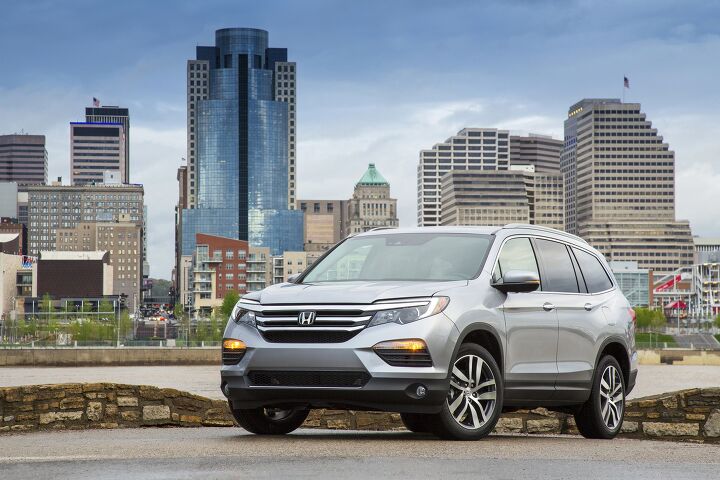


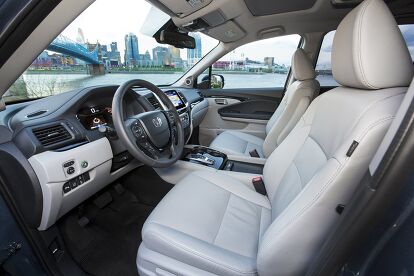















































































































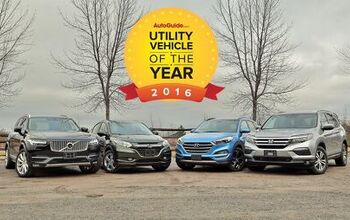



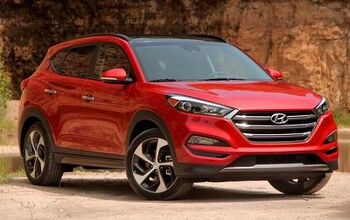



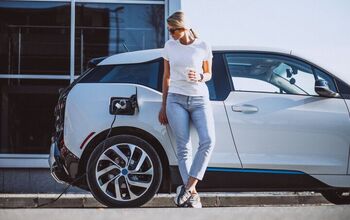

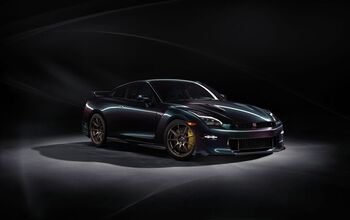
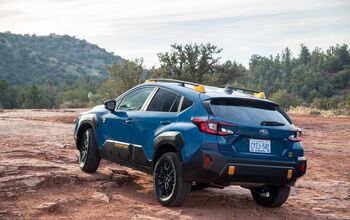



Comments
Join the conversation
"70 percent to the rear when needed and all of that can be delivered to just one rear tire to push you through a corner." So it has a limited slip differential in the back? The article mentioned the start-stop system shutting off the engine when you are about to take off again from stop sign. It should behave like a Western Digital Black 2 dual drive, where it spins down the hard drive (shuts off the engine) after a certain amount of seconds of being idle, but then if the I/O is rather regular (or frequent stops), the time period of idleness in which the computer spins down the drive (shuts off the engine) is lengthened. In other words it should have an algorithm to adapt to drive styles and situations so it won't be shutting off the engine if it is likely you will need it very soon. Glad auto start-stop is starting to proliferate the US car market. Does it have a direct injected engine?
Buy at your own risk! As long as it comes equipped with Variable Cylinder Management (VCM), the Pilot is a loser. VCM is a failed technology that has costed consumers millions and untold lost time dealing with this pathetic engineering gimmick.